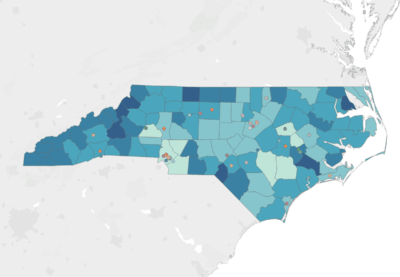
In 2020, 18 states have laws in effect that require residents to present photo identification in order to vote. North Carolina voters approved such a policy through a state constitutional amendment in 2018. The General Assembly then passed a law implementing the requirement which was supposed to go into effect in 2020. However, on Dec. 26, 2019, a federal court said that it would temporarily block the photo ID requirement pending the outcome of a legal challenge to the law.
If the photo ID requirement ultimately goes into effect, it may be an obstacle to voting for individuals with disabilities. Numerous studies have found that voter photo ID laws have a disproportionately negative impact on disadvantaged groups whose members are less likely to have driver’s licenses or other forms of photo identification.
Teenage students with disabilities are among those who are less likely to obtain photo IDs that will enable them to vote upon turning 18. As an illustration, a 2017 study of New Jersey residents found that about one third of adolescents with autism acquired driver’s licenses, compared to 83.5% of adolescents without autism.
Schools can address possible photo ID issues among students with disabilities through the students’ Individualized Education Programs (IEPs). IEPs provide special education and related services to students with qualifying disabilities. In addition to addressing students’ needs in school, IEPs also help students prepare for adult life. Once a child with an IEP reaches the age of 14, his or her IEP must have a “Transition Plan.”
Transition plans include measurable goals and transition services needed to meet a child’s objectives in the areas of employment, education, training, and independent living skills. For example, goals may include obtaining job skills, managing personal finances, or using public transportation systems. While the goals of transition planning depend on an individual student’s needs, for many children, appropriate transition planning should ensure that students are prepared to self-advocate and be civically engaged. In doing so, transition plans should address the practical obstacles students may face casting ballots.
To some extent, helping students become voters is already part of transition planning. Typically, a child’s school and local Vocational Rehabilitation office (VR) provide transition services. VRs are designated entities for registering voters under the National Voter Registration Act. They are required to ask anyone applying for or receiving their services whether they would like to register to vote. VRs also must provide assistance for filling out voter registration forms.
Therefore, both voter registration and obtaining an appropriate photo ID should be included in transition plans. In North Carolina, residents who are at least 17 years of age can obtain a non-operator photo ID card at no cost.
Aside from encouraging democratic engagement among young North Carolinians, incorporating voting-related goals into transition plans also addresses the broader problems of low voter registration and turnout among Americans with disabilities. A Rutgers University study found that in the November 2016 election, the national voter turnout rate for individuals with disabilities was about 6 percentage points lower than the turnout rate for individuals without disabilities. Similarly, the voter registration rate of among eligible individuals was 2 percentage points lower.
Voting is a cherished and important exercise for all citizens. Transition plans are a way to ensure that students with disabilities have an equal opportunity to partake in the democratic process.







